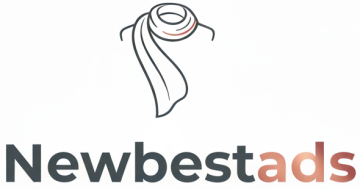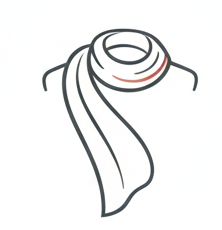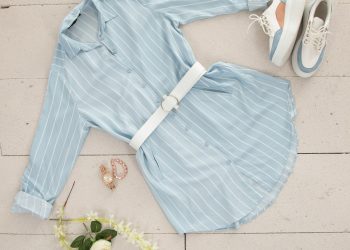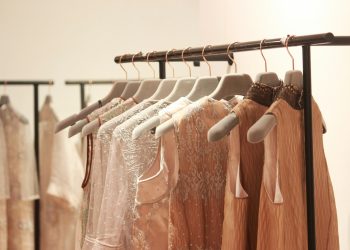Fashion hauls have become a cultural phenomenon in the digital age. Every day, influencers and fashion enthusiasts showcase their latest purchases, flaunting new clothing, accessories, and shoes for their followers. These hauls, often filled with excitement and enthusiasm, promise to bring the latest trends and styles directly to your wardrobe. But with the sheer volume of products being showcased, it’s easy to wonder: do these fashion hauls really live up to the hype?
In this essay, we’ll delve into the concept of fashion hauls, evaluating the pros and cons of following these trends, how they impact consumer behavior, and whether they meet the expectations set by influencers and brands. By exploring the experience of fashion haul shopping—both from a consumer’s perspective and that of the brands involved—we’ll determine if these hauls truly deliver on their promises or if they’re simply overhyped.
What Is a Fashion Haul?
Before diving into whether fashion hauls live up to the hype, it’s important to understand exactly what they are. A fashion haul refers to a collection of clothing or accessories that an individual purchases, often displayed in a single video or blog post. Typically, these hauls are presented by influencers or YouTubers who provide commentary on each item, explaining how it fits, its quality, its price, and how it compares to other pieces in their wardrobe. Fashion hauls have gained popularity due to the rise of social media platforms like Instagram, YouTube, and TikTok, where influencers share their shopping experiences with large audiences.
The appeal of these hauls is clear: they offer a glimpse into the latest fashion trends and provide viewers with inspiration for their own shopping decisions. The excitement of seeing new clothing and accessories, combined with the convenience of online shopping, makes these hauls incredibly enticing. However, while the concept of a fashion haul seems harmless and fun, it’s important to evaluate whether the products featured actually live up to the promises made in these videos and posts.
The Hype vs. Reality: Is It All It’s Cracked Up to Be?
Fashion hauls often come with high expectations. Influencers tout the products as being trendy, affordable, and worth every penny. However, the reality may not always match the hype.
- Quality and Fit
One of the most common issues with fashion haul purchases is the discrepancy between what is promised in a video and what is actually received. Many fashion hauls feature pieces that look great on camera but fail to live up to expectations when it comes to fabric quality, stitching, and overall fit. Clothing may appear to be high-quality in online photos or videos, but when purchased, the materials may feel cheap or poorly made.
Moreover, the fit of clothing can be difficult to assess when viewing it in a haul. While an influencer may rave about how well a garment fits, it doesn’t always translate to the consumer. Body types vary widely, and what works for one person may not work for another. This can lead to disappointment when items don’t fit as expected, especially when sizing guides provided by brands are unclear or inconsistent.
For example, a piece of clothing that looks flattering on an influencer may appear entirely different when worn by someone else, especially if the fabric doesn’t hold its shape or stretch as expected. Influencers often have styling teams or professional photographers who know how to make an outfit look its best, but the reality for the average consumer may be less flattering.
- Price and Value for Money
Another aspect of the fashion haul hype is the price. Many fashion haul videos feature affordable or “budget-friendly” items, making them seem accessible to a wider audience. However, the quality of these items often doesn’t justify the cost. While they may appear inexpensive, the low-quality fabric, stitching, and construction may cause them to wear out faster, making them less cost-effective in the long run.
Additionally, the sheer volume of items featured in a haul can make consumers feel like they are getting a great deal, even if the individual prices aren’t as reasonable as they initially seem. While influencers may highlight sales, discounts, or promo codes, the overall value may be questionable when the garments wear down after a few washes, or when they don’t live up to the level of quality initially suggested.
Consumers may also fall into the trap of purchasing more items than they truly need, encouraged by the excitement of seeing new pieces. This can lead to overspending and ultimately regretting purchases that weren’t necessary or well-suited to personal style.
- Trends vs. Timeless Pieces
Fashion hauls are often centered around the latest trends, which are constantly changing. While it’s fun to buy the newest items and stay on top of what’s “in,” trends can be fleeting. What’s trendy today may be out of style tomorrow, leaving consumers with pieces they can no longer wear or that don’t reflect their long-term style.
For example, many fast fashion brands feature trendy items that are designed for a specific season or moment. While these items may be exciting to wear for a short time, they may not offer the longevity of timeless pieces that transcend trends. Consumers might find themselves caught in a cycle of buying clothing that becomes obsolete as trends evolve.
In contrast, investing in classic wardrobe staples—like a well-fitting pair of jeans, a simple black dress, or a quality leather jacket—can lead to a more sustainable wardrobe. Fashion hauls tend to push trends over timeless essentials, making it easy to get caught up in the excitement of new looks that may not last.
- Sustainability Concerns
As the fashion industry continues to grapple with sustainability issues, many fashion hauls feature products from fast fashion brands, which are often criticized for their environmental impact. Fast fashion is notorious for its poor working conditions, unsustainable production methods, and wasteful consumption patterns. While influencers may present these items as affordable and trendy, they rarely discuss the ethical or environmental implications of purchasing such products.
For conscious consumers, this disconnect can be a significant issue. The constant push to buy new clothing, combined with the disposable nature of many fast fashion items, leads to a cycle of overconsumption and waste. This is particularly concerning given the rising environmental costs of producing and disposing of clothing.
In light of this, it’s important for consumers to consider the broader impact of their purchasing decisions, even if the items featured in fashion hauls are appealing or inexpensive.
The Positive Side of Fashion Hauls: Inspiration and Discovery
While there are valid concerns about fashion hauls, they aren’t entirely without merit. Many people turn to hauls for inspiration and ideas on how to style certain pieces. Influencers often provide creative ways to pair items or suggest wardrobe combinations that viewers might not have considered. This kind of inspiration can be invaluable when trying to refresh a wardrobe or experiment with new styles.
Additionally, fashion hauls can offer a platform for smaller, independent brands to gain exposure. While large fast-fashion retailers dominate the haul scene, many influencers showcase lesser-known brands that provide unique, high-quality, and even sustainable options. For consumers who are willing to look beyond the big names, fashion hauls can open the door to discovering new, more conscious brands that align with their values.
Does It Live Up to the Hype?
So, do fashion hauls live up to the hype? The answer isn’t clear-cut. There are pros and cons to the haul experience, and much depends on individual preferences, goals, and shopping habits. On one hand, fashion hauls can offer inspiration, expose consumers to new brands, and present an exciting way to keep up with the latest trends. On the other hand, they can encourage overconsumption, overspending, and the purchase of low-quality, short-lived items.
Ultimately, the key to enjoying fashion hauls without falling into the trap of overhyped expectations is balance. Consumers should approach these hauls with a critical eye, focusing on quality, value, and personal style. Rather than succumbing to the pressure to buy everything showcased, take time to evaluate what truly fits into your wardrobe and lifestyle. In the end, the real hype of a fashion haul should be in how well it complements your style—not in how many items you collect.











